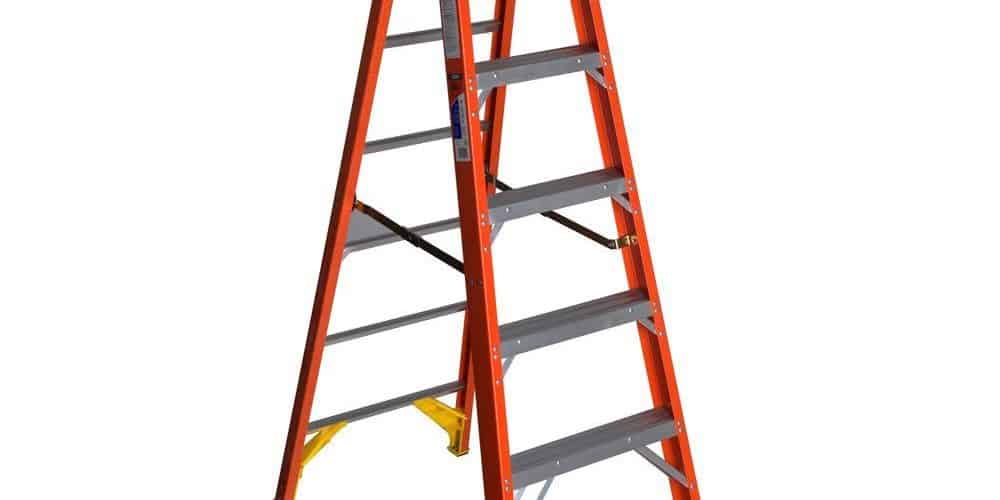Even many of the smallest home projects and repairs require access to high places. Sometimes using a chair from the dining room will not get you to the height you need to change a light bulb, and it is not safe or wise to stand on the back of the couch to hang that painting. A good aluminum step ladder is often the best way to safely access heights for these and many other projects, and the right ladder is a great all-purpose piece of equipment to have around your home.
One of the first things you will need to consider when buying a ladder is the material it is made of. Step ladders are most commonly made of aluminum, wood, or fiberglass. Each material has its own advantages and disadvantages.
Aluminum ladders are very lightweight and work well for people that need to move the ladder around a lot. The trade-off is that aluminum dents and wears much more easily than wood or fiberglass.
Wooden ladders are much less common than they once were. Wood does not weather well. It splinters, and when a wooden ladder starts to break down, it becomes very unsafe. If you find a wood step ladder at your local home improvement store, it is likely to be a very short one with a decorative finish. While not very good for multi-purpose use, a small decorative wooden ladder can be nice to have in the kitchen corner to use for getting things from high cabinets or changing a bulb or two.
Most utility and multi-purpose ladders are made of fiberglass. Fiberglass ladders are fairly lightweight, but they are also very sturdy and weather well. Fiberglass ladders are also usually cheaper than aluminum or wooden ladders and are offered in many different sizes. Unless you have a good reason to buy an aluminum or wooden ladder, you are probably better off going with fiberglass.
The functionality of your folding step ladder will depend upon the height as much as the material. Naturally, taller ladders cost more than shorter ones. However, you want to make sure to get a ladder that is tall enough for your needs. Most people do not care to spend money on a bunch of ladders that they will use sparingly. It makes more sense to buy one or two that will cover most projects.
When determining the right height for your ladder, consider the maximum height you will need to access. You will also need to factor in the height of the person using the ladder and the fact that it is only safe to go up to the second or third step from the top. For example, to access a ceiling of twelve feet, a six-foot man probably needs a ladder of six to eight feet. At the second rung from the top of a six-foot ladder, the man’s head would be around ten feet off the floor. Assuming his arms are at least two feet long, this should provide adequate access to the ceiling.
So what can you expect to pay for a new platform step ladder? Prices increase exponentially with the height of the ladder because very tall ladders require much more material and support than very short ones. So, for ladders in the two to ten-foot range, plan to pay $10 to $30 per foot. Above ten feet, expect to pay at least $40 to $60 per foot.
Unfortunately, selecting the right ladder is not an exact science. It is a good idea to try it out in the store if possible. Verify the store’s refund and return policy as well. Then you can try the ladder out at home to see if it is the right one. In the long run, getting the right heavy duty step ladder is worth the time, effort, and cost. Then, your couch and chair climbing days will be things of the past.
Related Posts



